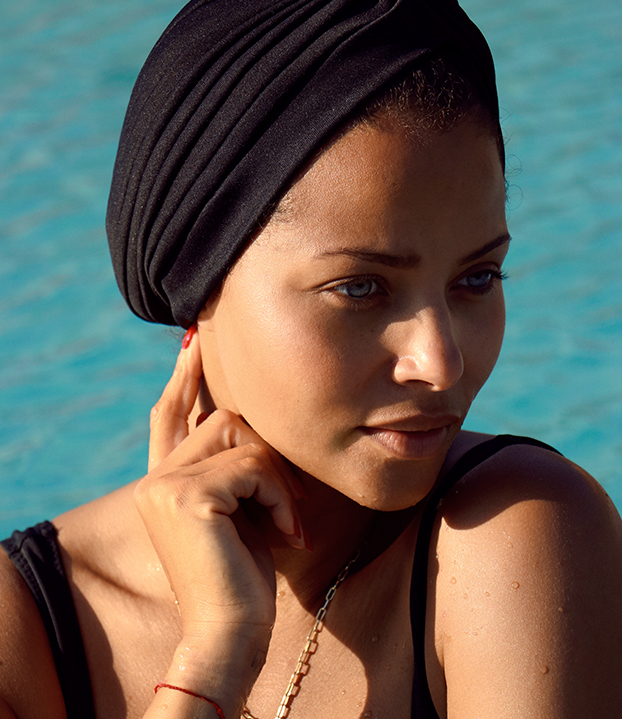5 Toxic Ingredients to Avoid When Buying Sunscreen
Denise Vasi
Did you know the compounds in your sunscreen are ingredients that your body will absorb and process? Many of those are Toxic ingredients disruptive to your health and even affect fertility. That might be hard to understand because we have been taught that wearing sunscreen protects us. And it does! Sunscreen does reduce your exposure to harmful UV rays, thus lowering the risk for skin cancer (when used with other sun protection methods), but how can we be sure that the sunscreen we are using is not harming us in other ways?
As with cosmetics, the responsibility falls on sunscreen manufacturers to ensure the safety of their products. With consumers increasingly concerned about the toxicity of sunscreen, the FDA has called on manufacturers to conduct more testing of certain chemical ingredients—but these ingredients are still allowed to be used in sunscreen while this testing is taking place. Avoid toxic ingredients when at all possible.
The Environmental Working Group has been filling in the gaps for consumers with their annual guide to sunscreen. The EWG has been a trusted resource of mine for about eight years now. It is where I go when I need to know more about the ingredients in products.
Ahead are five chemical sunscreen ingredients The Environmental Working Group recommends avoiding:
Oxybenzone
The EWG has been calling on the FDA to investigate the safety of oxybenzone for years; in 2019, the FDA began updating sunscreen regulations and requested more research on the efficacy and safety of oxybenzone and several other chemicals used in sunscreen. Oxybenzone test results show that it is absorbed through the skin in large amounts, is allergenic, is a potential endocrine disruptor and has been found in human breast milk, amniotic fluid, blood, and urine. Children are particularly vulnerable because there’s more potential for bioaccumulation with years of use.
Oxybenzone doesn’t only mess with human reproductive systems—it’s responsible for destroying coral reefs in the ocean. All Good CEO and founder Caroline Duell says oxybenzone said, “Oxybenzone damages coral DNA, inhibiting its ability to reproduce; causes deformities on the coral, makes coral more susceptible to bleaching, and initiates endocrine disruption.”
Other names: benzophenone-3, BP-3, Milestab 9, Eusolex 4360, Escalol 567, KAHSCREEN BZ-3
Octinoxate
Also known as octyl methoxycinnamate, octinoxate is believed to be an endocrine disruptor that acts like a hormone in the body and may interfere with the thyroid and reproductive system. The ironic part is that sunscreen is supposed to help protect your skin from aging, but octinoxate can cause premature aging by producing free radicals that damage the skin and cells.
Other names: methoxycinnamate (OMC), parsol, parsol MCX, parsol MOX, escalol, 2-ethylhexyl p-methoxycinnamate
Homosalate
Homosalate is another ingredient that the FDA is calling for more testing on. There are concerns that it may disrupt reproductive hormones like androgen, progesterone, and estrogen. This chemical can cause your skin to age faster when exposed to UV light by producing oxygen radicals that damage skin cells.
Other names: Coppertone, TRIMETHYLCYCLOHEXYL SALICYLATE, Homomenthyl salicylate
Octocrylene
Octocrylene has been shown to penetrate the skin in lab studies, and it may potentially be an endocrine disruptor, according to some preliminary research. Octocrylene has been found in various types of aquatic life and has caused DNA damage, reproductive effects, and developmental problems.
Other names: Octocrylene, Octocrilene, Uvinul N-539
Avobenzone
The FDA says there is insufficient data to determine whether avobenzone is absorbed through the skin and, if so, how much of it is absorbed and how it affects the body. More than that, it doesn’t offer a substantial amount of protection. Once exposed to the sun, avobenzone alone only provides about 30 minutes of protection.
Other names: Parsol 1789, Milestab 1789, Eusolex 9020, Escalol 517, Neo Heliopan 357 and others, INCI Butyl Methoxydibenzoylmethane
Like most cosmetics and skin care products, finding the right sunscreen can be a challenge but it definitely doesn’t have to be. When in doubt, choose mineral sunscreens—that is, sunscreens where the active ingredient is zinc or titanium dioxide—rather than their chemical counterpart. Avoid Toxic ingredients and your skin and our oceans will thank you.








